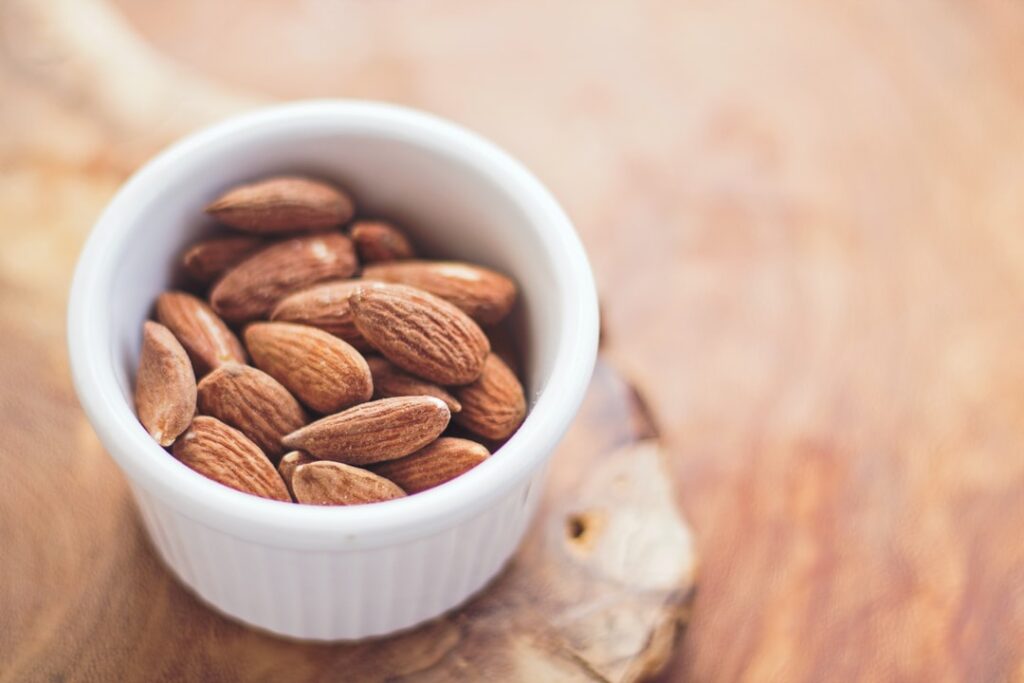In the past decade, the guidance and advice around when to introduce allergens into an infant’s diet have changed and varied causing health care professionals and parents confusion.
Fortunately, over the past five years there has been increasing research in food allergies and weaning; focusing on the prevention of food allergies such as the LEAP and EAT studies. Data from both LEAP and Eat show that introducing allergenic foods at the same time as other solid foods may in fact protect infants from developing a food allergy.

What are the main allergies?
There are 14 main allergens listed below that are the most likely foods to trigger an allergic reaction across the whole UK population. By law, these allergens have to be highlighted on an ingredients list on any pre-packaged foods you buy.
These are:
- Cow’s milk
- Egg (egg without the Red Lion stamp should not be eaten raw or lightly cooked in infants).
- Cereals containing gluten, including wheat, rye, barley and oats.
- Tree nuts (crushed, ground or butter for children under 5 years).
- Peanut (crushed, ground or butter for children under 5 years).
- Sesame
- Soya
- Shelfish (not to be served raw or lightly cooked for infants).
- Fish
- Mustard
- Celery
- Sulphur Dioxide
- Lupin
- Molluscs (not to be served raw or lightly cooked for infants).

First steps into solid foods
- Can baby hold their head up and sit unsupported?
- Does the baby have hand – eye coordination? Do they bring food to their mouth?
- Can they move food from the front their mouth to the back of their mouth and swallow?
Once your baby is ready to wean, at around 6 months of age (and not before 4 months) parents can introduce complementary foods, usually pureed. They should start by offering small amounts of vegetables, fruit, starchy foods, protein. Once they feel confident that the baby is managing purees they should start to consider introducing allergens and the following below:
- Ensure baby is well and not recovering from any sickness.
- Include foods associated with food allergies that are part of the family’s diet: this can include egg, foods.
- containing peanut and tree nuts, pasteurised dairy foods, fish/seafood and wheat.
- Introduce one allergen at a time.
- Consider offering food earlier in the day for example at breakfast or lunch to allow for time to monitor any signs or reaction.
- Start with a small amount e.g ¼ teaspoons and slowly increasing over the next 2-3 days.
- Once foods containing allergens have been introduced it is important for parent to continue introducing those foods. Particularly egg and peanut aiming for 2-3 times week.
- If the infant does have eczema, it is best to make sure their skin is in a good condition prior to introducing a new allergen. Consider maximising their eczema treatment and any emollients they may use.
- If the infant dislikes the food reassure parents to be patient and try again another day.

Allergen Recommendations
Egg: Choose British Lion stamped eggs. Egg in raw form is more likely to cause an allergic reaction than a baked food. The boiled egg could firstly be offered mashed into other cooked foods e.g vegetables or rice. As the baby progresses this could be offered as finger food as scrambled egg or an omelette, or pancake. Aim for one egg over the course of the week.
Peanut: Never give whole peanuts or chopped nuts Use finely grounded nuts or a smooth peanut butter, or “puffed peanut” snacks
Tree Nuts: Never give whole nuts or chopped nuts. Use finely grounded nuts or smooth nut butter e.g cashew butter, almond butter mixed with yoghurt, porridge or fruit
Cow’s Milk: Sugar-free yoghurts or fromage frais, fresh whole milk added to meals e.g porridge, sauces, mashed potatoes.
Wheat: Weetabix or other cereals containing wheat, well-cooked pasta, toast fingers
Seeds: Hummus mixed with tahini (sesame seeds), crushed seeds added to yoghurt or porridge or fruit.
Fish, seafood: Purred, flaked or mashed cooked fish (cooked haddock salmon or trout) or seafood (prawns, crab mussels)
Soya: Is found in many bread products and so does not need to be offered separately as a soya product.